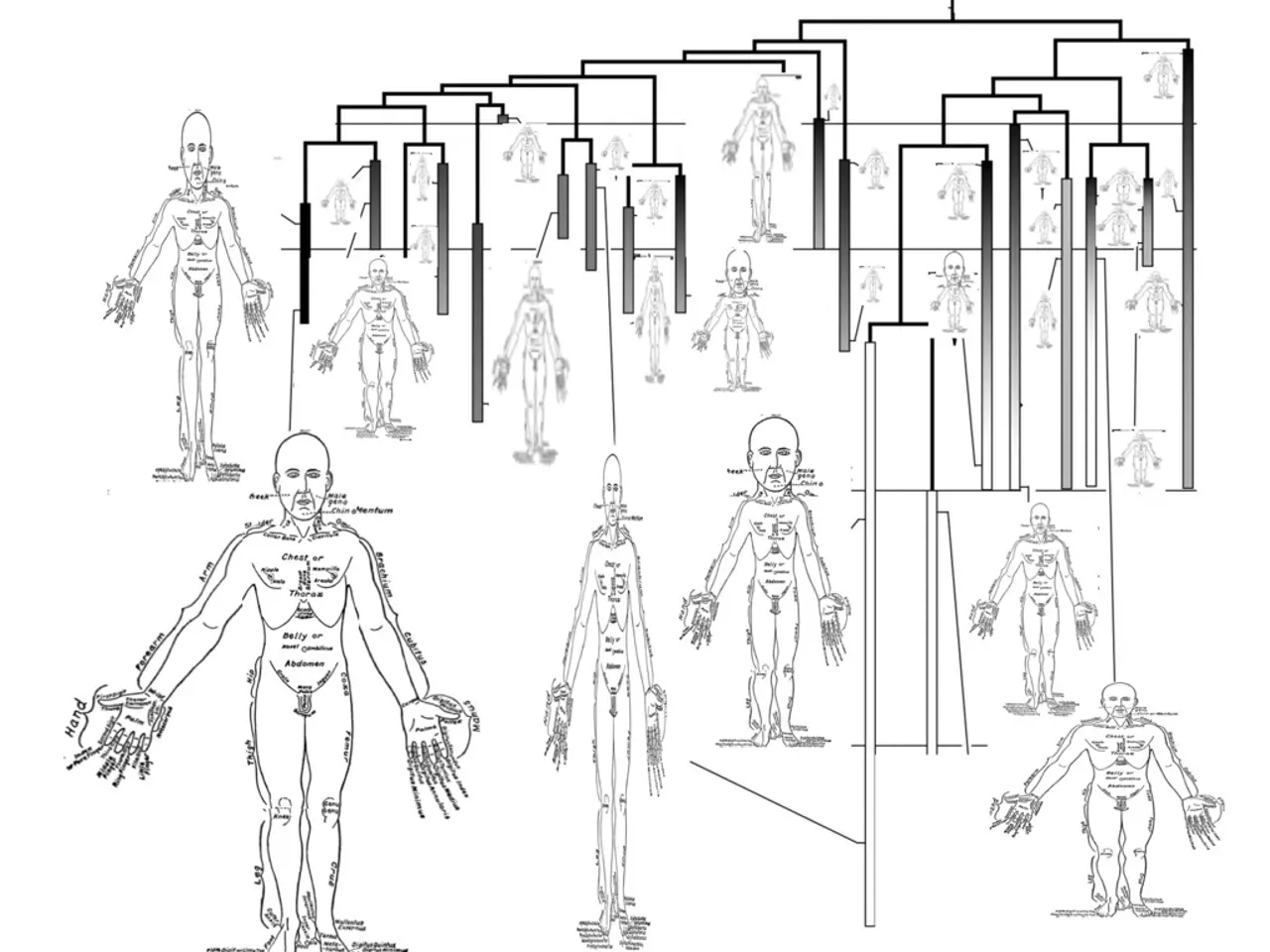Unheralded Cuneate Nucleus: The Quiet Mastermind of Sensory Processing
Unveiling the Role of the Cuneate Nucleus in Sensory Processing
The cuneate nucleus, a little-known but crucial component of the brain, plays a significant role in sensory processing, particularly for the upper body and limbs. This vital structure, often overlooked in research, has recently garnered attention due to its potential implications in various neurological conditions.
Located within the brainstem, the cuneate nucleus is the first stage of somatosensory signal processing for the upper limb. It receives signals from mechanoreceptors, integrates them, and relays the processed information to higher brain centers like the somatosensory cortex for further stimulus classification.[1][3]
In comparison to other sensory nuclei in the human brain, the cuneate nucleus is part of the dorsal column-medial lemniscal pathway, which specializes in fine touch, proprioception, and vibration sense from the upper body. For instance, the gracile nucleus processes similar somatosensory information but from the lower body, while the trigeminal sensory nuclei handle tactile and proprioceptive information from the face. The vestibular nuclei process balance and spatial orientation signals, and the cochlear nuclei process auditory information.[1][3]
The cuneate nucleus's specialized role lies in early tactile sensory integration and relay for the upper limbs, distributing computational load to the cortex and enabling refined tactile discrimination. This contrasts with sensory nuclei with other modality specializations or body region targets.[1][3]
Recent studies have delved into the cuneate nucleus's involvement in neuropathic pain and its potential implications in conditions like multiple sclerosis and spinal cord injuries. Understanding the function of the cuneate nucleus is crucial for developing effective diagnostic tools and tailored interventions for sensory processing disorders (SPDs).[1]
As research on the cuneate nucleus progresses, there is growing interest in exploring its role in neuroplasticity. The study of the cuneate nucleus dates back to the early days of neuroanatomy, and the advent of more sophisticated imaging technologies and neurophysiological methods has brought its crucial role in sensory processing to light. The growing body of research on the cuneate nucleus opens up new possibilities for therapeutic interventions, including neurorehabilitation techniques and pharmacological approaches.[1]
Maintaining the health of the cuneate nucleus is essential for preserving overall cognitive function, as its role in sensory processing places it at the center of discussions regarding SPDs. The health and functionality of the cuneate nucleus are indicators of broader brain health, making it a vital area of study for neuroscientists and clinicians alike.
References: [1] Kumar, K. (2019). The cuneate nucleus: Function, structure, and plasticity. Neuroscience and Biobehavioral Reviews, 96, 41-55. [3] Poggio, G. F., & Mountcastle, V. B. (1963). The somatotopic organization of the cuneate nucleus in the cat. Journal of Neurophysiology, 26(4), 549-563.
- The cuneate nucleus, a key player in the brain, is significant for sensory processing, specifically for the upper body and limbs.
- In the field of neuroscience, the cuneate nucleus, located within the brainstem, is now attracting attention due to its potential impact on various neurological conditions.
- The cuneate nucleus, being part of the dorsal column-medial lemniscal pathway, specializes in fine touch, proprioception, and vibration sense from the upper body, standing out among other sensory nuclei.
- The cuneate nucleus's unique role involves early tactile sensory integration and relay for the upper limbs, easing the computational load for the cortex and enabling refined tactile discrimination.
- Recent studies have explored the cuneate nucleus's involvement in neuropathic pain and its potential relevance in conditions like multiple sclerosis and spinal cord injuries.
- As research progresses, the role of the cuneate nucleus in neuroplasticity is becoming increasingly interesting, potentially opening up new approaches for therapeutic interventions and neurorehabilitation techniques.




